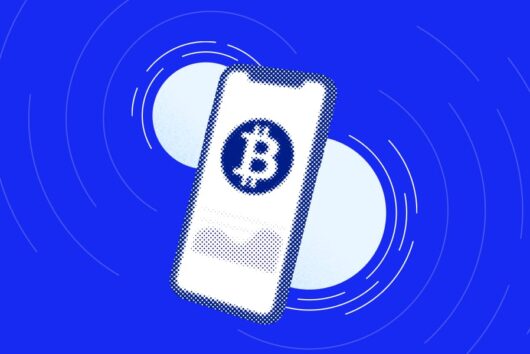Bitcoin’s Bad Reputation: The Truth Behind The Sensationalism
Bitcoin has a bad reputation. But how much of it is based on fact? We look beyond the sensationalism to separate the myths from reality.
 Image: AMC Networks Inc.
Image: AMC Networks Inc.
As industry insiders, it is sometimes hard to admit Bitcoin suffers from serious negative perception issues.
In the minds of many people, it’s linked to drugs, terrorist financing and money laundering. This incorrect connection slows down adoption, sets the regulatory bar high, and is off-putting for banks.
Bitcoin’s bad reputation stifles innovation, creates an unfair competitive environment and prevents people reaping the potential benefits.
Perception and emotion drive most of these concerns, not facts and data. Yes, there are risks surrounding Bitcoin. All financial systems carry risks. The more important question is if these are worth the benefits.
So let’s try and put a few things in perspective:
It’s been a long and winding road for Bitcoin
Most people first learnt about Bitcoin from the collapse of Mt Gox and the rise and fall of the Silk Road. Both events gave the impression that Bitcoin is insecure and used by drug dealers. Since then, we’ve come a long way – the public perception just hasn’t caught up yet.
First impressions, whether right or wrong, matter . Worse, they often persist, even when we’re presented with contradictory information. That early idea of Bitcoin as something dangerous and illegal has stuck around despite its inaccuracy. This sweeping judgement on an important, complex topic is
We’re formulating all our arguments on shaky ground. All we can do is to appeal to logic and fairness to consider the facts before making sweeping judgments on important and complex topics.
The Lehman Brothers bankruptcy didn’t mean USD is an insecure scam or that recent USD1bn drug bust in San Diego didn’t mean it’s used by drug dealers. Silk Road and Mt Gox were outlier events, caused by people and not the cryptocurrency itself.
Let’s step back and take a look at the size of the Bitcoin economy.
The Bitcoin economy is tiny. Measured by market cap, it’s currently worth around USD6bn. By some estimates up to 30% of that is not usable. Let’s call that usable amount the Bitcoin Free Float (BFF.)
Using this handy visualization from Visual Capitalist (accurate enough to get the right perspective), we can see that Bill Gates’ personal wealth is around 20x BFF. Apple’s market cap is around 150x BFF.
To repeat that unless you missed the implications: One company in the US is around 150 times larger than the entire Bitcoin economy.
One company. One hundred and fifty times. The entire economy. Whichever way you look at it, the size of the Bitcoin economy is tiny right now.
Let’s get specific about the links between Bitcoin and crime
TERRORIST FINANCING
A Fox News (known for biased reporting) article about ISIS supposedly using Bitcoin to fund their operations had a big impact on how law enforcement view cryptocurrencies.
Disturbingly, few officials Luno spoke to had any knowledge that the EU law enforcement agency Europol published a report stating there was no evidence to link ISIS to Bitcoin.
In fact, from a terrorist financing perspective, the big culprit in the Paris attacks was prepaid cards, an industry projected by MasterCard to be over USD 820 bn in 2017(±200x BFF), if not larger. Terrorists also use other, larger regulated and unregulated systems like Hawala.
This is also not the first time there have been accusations of journalists inaccurately trying to combine the controversial topics of ISIS and Bitcoin to drive more traffic.
While the media has done a good job of raising awareness, they have also done a tremendous amount of damage through selective or even misreporting.
Let’s look at other useful data points: A recent Emerging Terrorist Finance Risks report by the leading global body, FATF, also suggests that while there is a risk of virtual currencies being used for terrorist financing, it represents a great opportunity for innovation. Traditional financing methods continue to present the most significant terrorist financing risks.
In a separate report, FATF also published guidance for a risk-based approach to virtual currencies. Nowhere is the alarm raised that Bitcoin is more of a risk than other methods.
A February 2016 statement by the European Commission dealing with terrorist financing states that “virtual currencies entail certain risks but do not at this point in time pose a threat to financial stability due to their still limited size…”.
Given Bitcoin’s market size, transparency and lack of market depth, it’s the worst way to finance terrorism or move money for illicit use.
MONEY-LAUNDERING
A recent publication by the UK treasury indicates Bitcoin is a low, if not the lowest risk for money-laundering compared to other methods.
Anecdotally, we’ve also spoken to many other government officials who say money launderers prefer to use methods that are everything that Bitcoin isn’t.
Some money launderers might have started using it a long time ago before having a understanding of how Bitcoin works. But as their knowledge has grown with the rest of the world, many of them have realised it’s not the best way to go about their business.
As this American Banker interview shows, top money-laundering experts agree that Bitcoin is a low risk.
While it’s difficult to get accurate data on the global market for money laundering, estimates put it at 2%-5% of global GDP. This amount is far larger than the entire Bitcoin economy.
ILLEGAL SUBSTANCES:
Addiction comes in many forms, and one of the worst cases we’ve ever seen is people’s addiction to reading stories about Bitcoin and drugs.
Yes, we’re also guilty. And just like real drug markets, the largest beneficiaries in this are the ‘producers’ and the ‘pushers’: the journalists and media companies that headline these stories.
The Bitcoin and drugs narrative triggers a lot of public interest, and while some of it originates from fact, it’s not representative of the broader Bitcoin economy.
Let’s look at some examples:
 Chainalysis overview of Bitcoin activity in 2015, by www.ofnumbers.com
Chainalysis overview of Bitcoin activity in 2015, by www.ofnumbers.com
There is a whole suite of new tools available to get more accurate data on the scale of illegal activity in the Bitcoin economy, in particular the purchase of illegal substances. A good example is Chainalysis’ overview of Bitcoin movements in 2015.
Transactions directed to illegal substance sites (shown in red) are in the minority. They predominantly come from two sites: BTC-e and LocalBitcoins, both who do not require proof of identification or follow Anti-Money Laundering regulations.
This is important to know, because it also helps legitimate Bitcoin players flag users that might have been transacting on these sites as higher risk, or ban them.
It should also be an indicator to law enforcement as to where they can focus their energy.
`the global drug market is huge, and by some estimates it’s already bigger than the global auto industry and soon to exceed the USD3.7 trillion global oil & gas market. This dwarfs anything drug-related that ever has or ever will be done in the Bitcoin world.
We recently did a presentation to law enforcement where there were a lot of concerns about people being able to buy drugs with Bitcoin. During one of the breaks one of the officials pointed out that there was likely more drugs being bought or sold for fiat currency in a downtown road close to the conference venue than in the entire Bitcoin economy on that particular day.
Given the size of the global drugs market, that statement probably wasn’t far off. If you’re in law enforcement and want to rid the word of drugs and terrorism, trying to track those doing it with Bitcoin is not the optimal use of your time.
So, do people buy drugs with Bitcoin? Yes. Do they do so more than with other payment methods, both on an absolute or relative basis? Evidence suggests this is not the case, not even close.
In fact, as more people start to realize that Bitcoin isn’t anonymous and how traceable Bitcoin transactions are (especially when even the industry ‘pros’, like the founder of Silk Road, get caught and sentenced), the more they are likely to avoid using this as a payment channel for these types of transactions.
Will this risk ever go away? No. Can it be successfully mitigated? Without a doubt, yes.
RANSOMWARE
Here’s another one that sticks its head out every now and again: companies that have their IT systems seized by hackers who demand payment in Bitcoin to unlock it, commonly through what is known as ‘ransomware’.
This practice has nothing to do with Bitcoin — it’s been going on from long before Bitcoin was invented (since 1989.)
Bitcoin is just one type of payment method used by these extortionists: depending on the group or scheme, it could also be one or all of wire transfers, premium text messages, online vouchers or prepaid cards.
There are even some people who argue that ransomware is a good thing. It helps identify vulnerabilities in IT systems, benefitting the users of those systems.
As Peter Van Valkenburgh at Coin Centre points out, if we’re looking to stop this we’d be better off fixing the weaknesses in our IT systems.
PONZI SCHEMES
While most ponzi schemes are designed to live in the grey zone and are therefore technically not illegal until officially declared ‘ponzi’ (typically as they start blowing up), this is unfortunately also Bitcoin’s next ticking time bomb that we might as well cover now.
I will bet all my Bitcoin that within the next 12 months a headline like “Bitcoin ponzi scheme collapses” will be all over the news.
Most people, including the Chief Economist at the World Bank, have realized that Bitcoin is not a ponzi scheme. But the fact that some schemes like MMM use Bitcoin as one of the many methods to collect their member funds is going to create a lot of confusion in the market when it does blow up.
And once again a lot of the media attention will be diverted to Bitcoin instead of the ponzi scheme itself, similar to what happened with Mt. Gox and Silk Road.
THE TRUTH IS OUT THERE
The Bitcoin industry is still new, and will take years to mature. That said, for a ‘financial system’ that is so new and small, it has made big strides in building tools to get the right data and to help the industry self-regulate.
Two to three years ago we had little visibility on what was going on in the Bitcoin ecosystem. Today we have fast-evolving tools that give us access to better data and new ways to mitigate risk. These include Chainalysis, Elliptic, Coinalytics, Blockseer, Scorechain, SABR and more.
So when we think about what is possible in terms of gathering data and mitigating the risks around Bitcoin, let’s not get too stuck in the present, especially given the size of the Bitcoin market.
We’re on a fast trajectory that is not only positive, but one that is likely to take us to a place where we’d be able to identify and manage risk better than with any financial system ever.
The devil you see vs. the devil you don’t.
We noticed something quite peculiar when working with some financial institutions and regulators. The fact that we could use the public blockchain to show when a specific person, for example, used Bitcoin to buy drugs online got them worried: “We don’t want to expose ourselves to these kind of customers and risks…” But where do you think that same customer banks in the ‘normal’ banking system? Yes, most likely with your bank. If that same customer can’t buy his drugs with Bitcoin, is he just going to stop buying drugs altogether? Nope. And when they buy drugs with cash today, where do you think they get that cash from? Your ATM!
The fact that Bitcoin companies can have such amazing visibility on these things is a huge benefit to law enforcement and society at large, but strangely, these same Bitcoin companies are being penalized for actually being able to detect it so well.
The banks’ customers are already doing the same bad things at a much grander scale, the banks just can’t make such a direct link between them and their customers most of the time. So they kid themselves into thinking that the problem doesn’t exist for them in the first place.
Many of the decision-makers in the banks also seem to mistakenly believe that Bitcoin has some inherent characteristic that makes it more prone for illegal use versus other ‘more innovative’ decentralized cryptocurrencies.
This is not the case. The only reason why Bitcoin sometimes appears worse is because it was the first one used, and still is the most popular. Any similar mechanism will run into the exact same problems in the future, just calling it by a different name doesn’t make that problem go away.
Bitcoin is an opportunity, not a threat.
At the heart of it, Bitcoin is there to benefit society: it is a new financial paradigm that ultimately makes it easier, cheaper and safer for people and institutions to transmit and store value. Like the internet, it doesn’t discriminate based on who you are or where you’re from, allowing for equal and universal financial access.
It’s worth expanding on this parallel with the internet particularly in the context of all the ‘bad stuff’ that people associate Bitcoin with. Is the internet all good? Definitely not. Terrorists, money launderers and drug smugglers use Facebook, Twitter and Whatsapp to communicate and co-ordinate every single day. At least 5–30% of visible online traffic comes from pornography. And here we’re not even considering the deep and dark web.
But despite all these issues, does society make a concerted effort to try and ban the internet? No, because the positives to society outweigh the negatives. For these same reasons, we should all be careful how we think about Bitcoin, because most evidence suggests Bitcoin to have the same net positive effect, if not more, than the internet. Both the internet and Bitcoin are tools that can be used by the ‘bad guys’ or the ‘good guys’, and thankfully most of the world are in the latter category.
So let’s all start looking at the glass half-full rather than half-empty. Let’s consider the facts when assessing the industry, continue to be transparent about both the good and the bad, and make a concerted effort to report and communicate responsibly. Yes, there will always be risks, but just like with all the other financial and communication systems of the world, we should put our energy into trying to mitigate these risks, not eliminate them.
Bitcoin isn’t going away, so we all might as well start dealing with it constructively.
 Discover
Discover Help Centre
Help Centre Status
Status Company
Company Careers
Careers Press
Press

